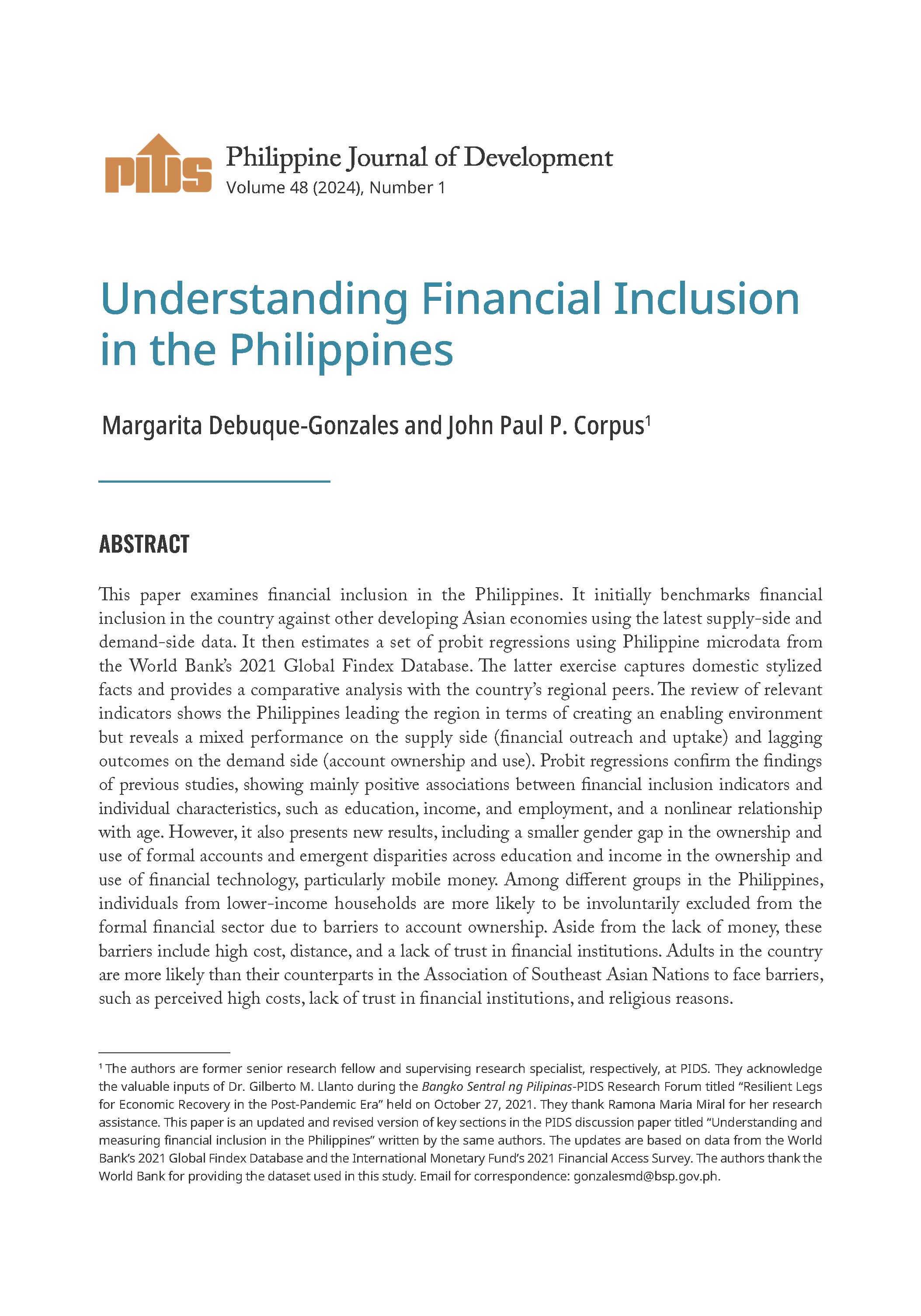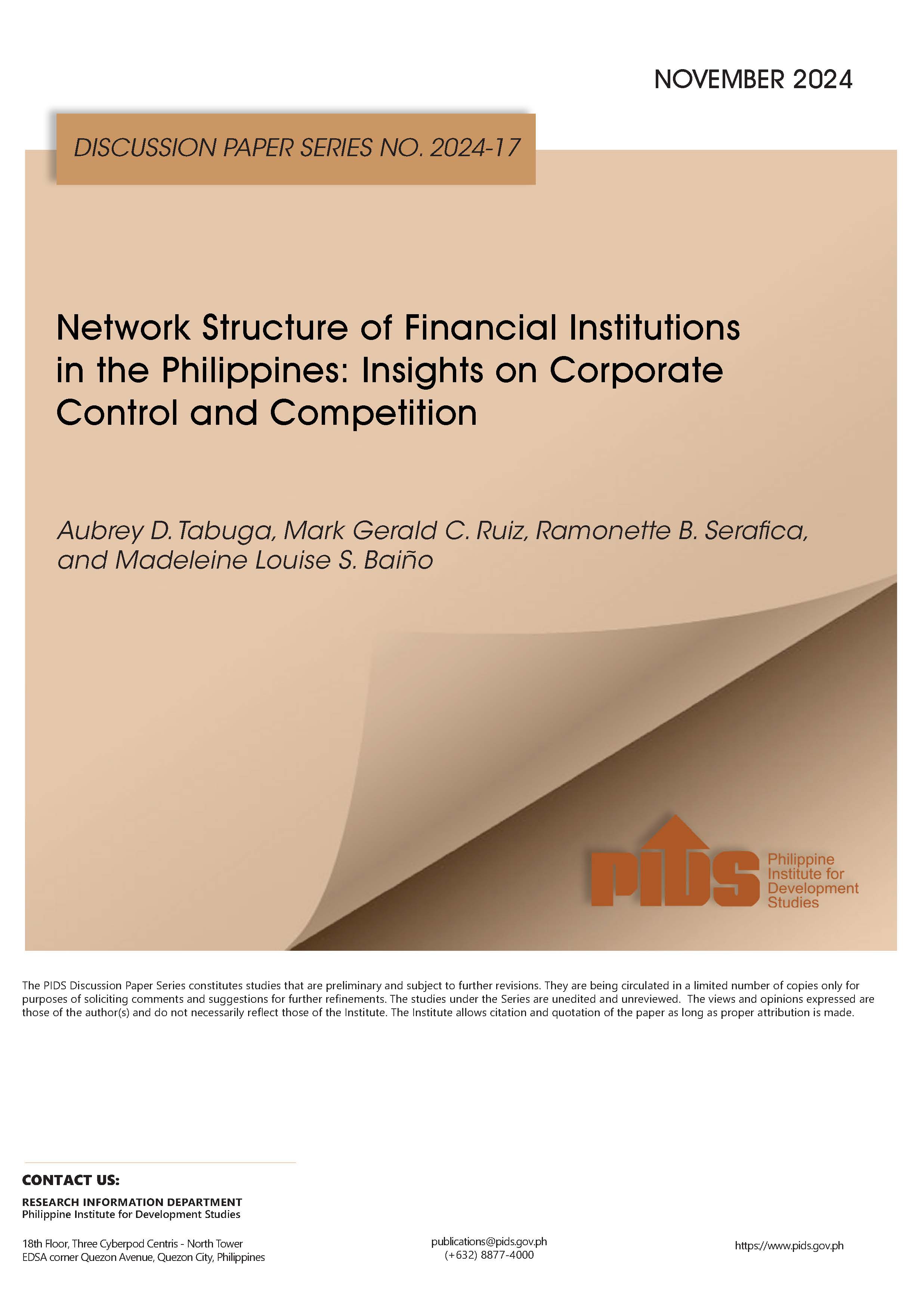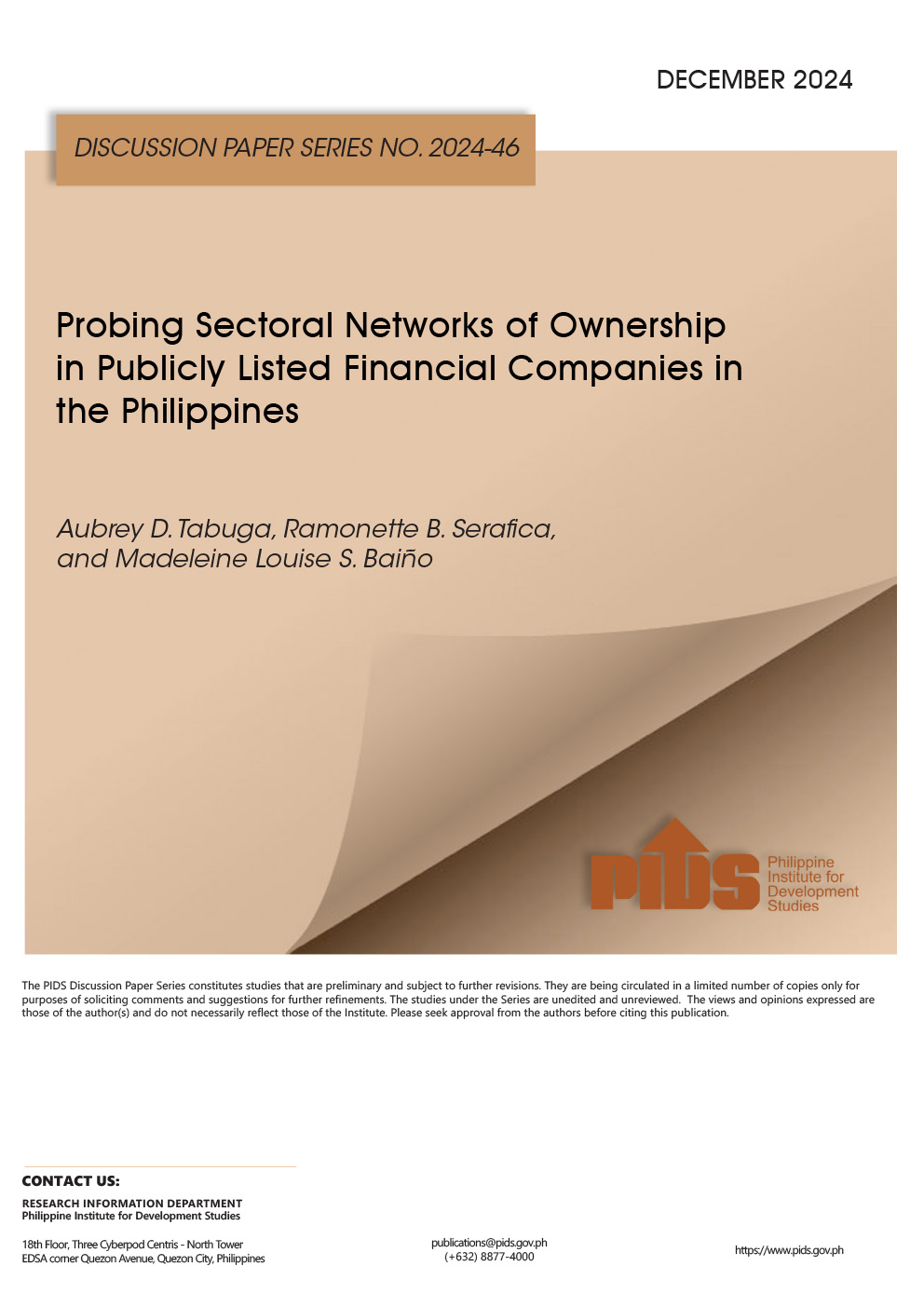The country’s financial services sector lagged behind its Asean peers due to lack of “significant transformation” in the past 30 years, according to a consultant of the Philippine Institute for Development Studies (PIDS).
In a policy note titled “Financial sector development: A review,” PIDS consultant Melanie S. Milo said that in terms of financial depth, access and efficiency, the Philippines was still lagging behind its Asean peers.
However, the Philippines remained one of the most stable in the region. The Philippine’s banking sector, Milo said, has also been resilient in the face of global financial crises.
“A review of the state of the Philippine financial services sector indicated that there has been no significant transformation over the past three decades. A review of the financial regulatory framework also showed that key domestic regulations remain restrictive,” Milo said.
Milo said the assessment was made based on the measures provided by the World Bank. Financial depth means the size of financial institutions and markets and access referred to the degree to which individuals can use financial services.
She added that efficiency, based on World Bank standards, meant the efficiency in facilitating financial transactions while stability referred to capitalization and returns and the potential for risk faced by financing institutions. This is measured through nonperforming loans.
The PIDS consultant explained that in terms of financial deepening, access, and efficiency, the Philippines lagged behind Malaysia and Thailand. The country has also fallen behind Vietnam in many aspects of financial development.
In terms of financial depth, the Philippines banking sector was smaller than Malaysia and Thailand. Milo added that private credit in the country was also the lowest in the region at 75 percent in 2016.
Milo said the Philippines insurance market’s density and penetration was also lower than the average for emerging markets, while the activity in the local bourse “has been low, if not stagnant in the last 20 years.”
In terms of access, Milo said the Philippines still has one of the lowest deposit accounts in the region. This despite having more banks per 1,000 adults than countries like Lao PDR (as of 2016 data).
Milo said one of the indicators for efficiency is the stock market’s turnover ratio: the higher the turnover ratio, the more liquid the market and thus more efficient.
“The turnover ratio is highest in Thailand in recent years, followed by Vietnam, Singapore and Malaysia,” Milo said. “The Philippines had the lowest turnover ratio indicating the thinness of its stock market.”
In order to address these concerns, Milo recommended that the financial services market must offer more financial products and services both to consumers and businesses.
She said there is a need to craft a comprehensive and detailed long-term strategic action plan for the Philippine financial sector.
Milo said this should help the financial sector identify reforms to address the weaknesses and reform it into an inclusive financial sector that is needed to support the country’s economic development.
“Any economic transaction requires efficient and reliable access to financial services to some degree. Thus, financial services should be provided in the most efficient and sound way to support economic growth and development,” Milo said.











